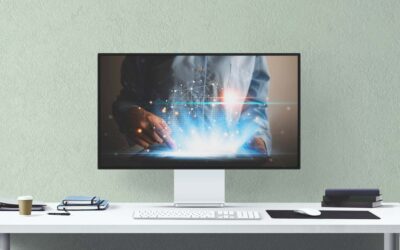Museum Digital Projects: Choosing Software

Rachael Cristine Woody
Continuing our follow up to the “Ask Me Anything: Museum Digital Projects” webinar, this post will address questions we received subsequently in order to provide additional insight, strategies, and resources.
We received several excellent questions after the deadline, and have decided to include them in this series. Our thanks to everyone who sent in questions! Your participation helps us to craft future content that is of the most use to you, our colleagues.
Today’s Post
Today’s post will focus on questions related to how to choose the right software for your museum digital project work.
1. Do I need a DAMS or a CMS? Are they the same thing? If not, do I need both?
- DAMS is about asset (digital file) preservation, storage, and management
- CMS is about capturing collection information and facilitating collections care and management.
- The DAMS and CMS platforms are developing in a way where there is increasing overlap between the two; especially when it comes to the ability to upload digital files and make them publicly available.
- Pick a system that provides the best match for the functionality you need.
Check out The Essentials of Evaluating the Museum DAMS vs CMS webinar for more information on the museum CMS versus DAMS and how to choose the right fit for you.
2. How do I weigh the pros and cons of different software?
The most effective way to vet a piece of software is to:
- List out all of your required functional needs and desired features.
- Prioritize your list in rank order as this will help to inform the functions and features you should look for first when evaluating.
- Please your prioritized criteria set into a spreadsheet in column headers across the top.
- When evaluating software, please the name of the software in the far left row and then work your way across the spreadsheet to indicate “Yes” or “No” on whether the product meets your criteria.
- Once you’ve finished evaluating your software options you have a visual representation on how well (or not) each one meets your needs.
Tip: I recommend color-coding the “Yes” cells in green and the “No” cells in red in order to have an easier “at-a-glance” read on product suitability.
What project management software is your go to?
There are a few circumstances where project management tools can help make the work more sustainable (less burdensome) and our lives a little easier. Here are a few examples of where a project management tool or platform can help:
- Repeatable task management
- Repeatable process management
- Stand-alone projects that contain multiple phases and activities
As museum digital projects are one of the more technically complex projects we work on, having a project management dashboard to help with the heavy lifting is a wise investment of your time.
There are dozens of project management (PM) platforms available online, many offering a freemium model to help get you started. As you explore the options, keep in mind:
- All products will offer similar functionality so it’s really down to how you like the “look and feel”.
- All mainstream project management platforms will offer introduction videos, tutorials, help forums, and other resources to help get you started.
- Once you have a feel for the platform functionality, begin to transpose a fairly basic and straight forward project.
For my company, we use the Click Up platform. To see the Click Up platform in action please view my webinar Project Management with Click Up, available via the Rachael Cristine Consulting YouTube Channel. For a webinar dedicated to project management in a museum setting, please view Project Management for Collections Managers, available on the same channel.
Conclusion
Regardless of what type of software you’re considering, the research, evaluation, and selection process are the same. It’s important that you have an excellent sense for what your requirements are and then methodically go through to evaluate products based on those requirements. When you approach software procurement with this framework you can have confidence in whichever tool you end up choosing.

Rachael Cristine Woody
Never miss another post. Subscribe today!
Similar Posts
No-Code Digital Storytelling Example: Rembrandt’s Self-Portrait at Kenwood House
Explore how English Heritage’s Kenwood House uses the no-code platform Shorthand to bring Rembrandt’s Self-Portrait with Two Circles to life through visual storytelling and interactive design.
Exploring No-Code Digital Storytelling: Hoover’s “Fanning the Flames” Exhibit
Explore no-code digital storytelling with Hoover’s ‘Fanning the Flames’ exhibit. See how interactive tools (Deep Zoom Color Compare & Hot Spot) enhance user engagement and the visual experience.
An Introduction to Scrollytelling for Museums
Discover how museums use scrollytelling and digital storytelling platforms to create immersive narratives. This introduction explores key concepts and approaches to interactive storytelling.
Exploring Self-Determinate Multiple Pathways: An Example of Digital Storytelling
Discover how self-determinate multiple pathways offer flexible interactive storytelling in museum exhibits. Learn from the Tenement Museum’s ‘Your Story Our Story.’






Leave a Comment
Comments are reviewed and must adhere to our comments policy.
0 Comments